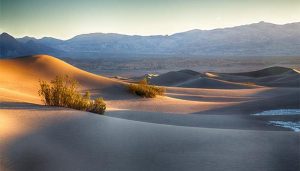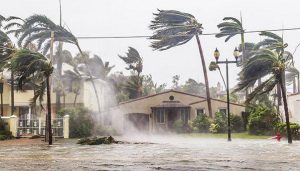 Two million American citizens without running water. From the Navajo territories of the South East to the Central Valley in California, from West Virginia to Alabama, from the border cities of Texas to the beaches of Puerto Rico, places still exist today – in the middle of the 21st century – where water remains a mirage. Water to extinguish fires, to mitigate the impact of drought, to satisfy basic needs such as thirst or hygiene.
Two million American citizens without running water. From the Navajo territories of the South East to the Central Valley in California, from West Virginia to Alabama, from the border cities of Texas to the beaches of Puerto Rico, places still exist today – in the middle of the 21st century – where water remains a mirage. Water to extinguish fires, to mitigate the impact of drought, to satisfy basic needs such as thirst or hygiene.
The US Water Alliance, in collaboration with Dig Deep (two American non-profit organizations), told this story in its report “Closing the water access gap in the United States” released a few weeks ago. It sheds a harsh light on the conditions of water crisis gripping many areas of the country where people lack indoor plumbing, running water or wastewater services.
US water crisis: the danger of polluted water
The US water infrastructure needs urgent attention so that the quality of water remains high and safe to drink. Currently – the study reports – 44 million Americans rely on water sources that violate the requirements of the Safe Drinking Water Act, the national law that protects water quality, the report said.
Furthermore, the United States Geological Survey has disclosed that 23% of the private well water tested for quality showed contamination of harmful chemicalelements such as arsenic, uranium, and nitrates.
The problem is often concentrated in rural areas, where 17% of the inhabitants say they have problems with safe drinking water, while 12% report malfunctions of the sewage systems.
According to the authors of the report, it is difficult to attain an accurate picture of the situation because there is no national database capable of monitoring water issues across the country. As a result, the report was drafted from different sources, each of which shows worrying truths about water management. The only federal data set that exists for wastewater information is the American Housing Survey (AHS), the study that analyzes the living conditions of Americans. According to the findings gathered by this federal database, 22 million citizens in the US live without a centralized sewer system, using septic tanks.
US drinking water crisis: the states that risk the most
The water gap is not equally distributed throughout the United States. Poorer and ethnic communities are particularly hard hit. And the most serious cases of water crisis occur especially in rural communities and in some urban suburbs. The critical points are concentrated in some states rather than in others.
The state that has the highest percentage of citizens without direct access to drinking water is Alaska, with 5.75% of the total population; followed by New Mexico(1.6%), Arizona and Maine, just under 1%.
Many areas of the United States are paying for the political choices made in the early 20th century, when areas inhabited by ethnic minorities or discriminated communities, such as African-Americans, were not equipped with modern water systems. This happened with the Navajo communities, for the African-American neighborhoods of Ohio or Virginia, as for the rural communities of the Central Valley in California.

US water crisis facts: the lack of investment
According to the study, one of this “water gap’s” causes is the lack of public funds in the United States to build new infrastructure and maintain existing assets.
Currently the federal funds allocated to water infrastructure are seven times lower than the standard allocation of 1970s.
Furthermore, the American Water Works Association calculates that to maintain current levels of service of the US water network it would take investments of $1 trillion to be allocated over the next 25 years.
Neglect of the country’s water infrastructure has sparked a political debate in many states. California Senator Kamala Harris has proposed a $220 billion plan to improve water infrastructure in light of the drought risk. In the debate on the Democratic primaries held in Detroit last summer, the Minnesota senator Amy Klobuchar presented her own $1 trillion infrastructure plan, with water infrastructure in first place.
As reported in an article in the “Washington Post” recently, both Congress and the Senate are establishing a bipartisan majority that supports the approval of a series of measures to ensure greater assistance to US citizens who live daily with problems of access to water.
Several projects are already being examined. Among these, construction has begun on a water pipeline that will run along Route 491 and that is able to carry water along a 280-mile route starting from the San Juan River to the Navajo lands. The project will meet the water needs of around 250,000 people by 2040. This is not a solution to the problem, but it is a good start for a closing the water gap in the United States of America.

